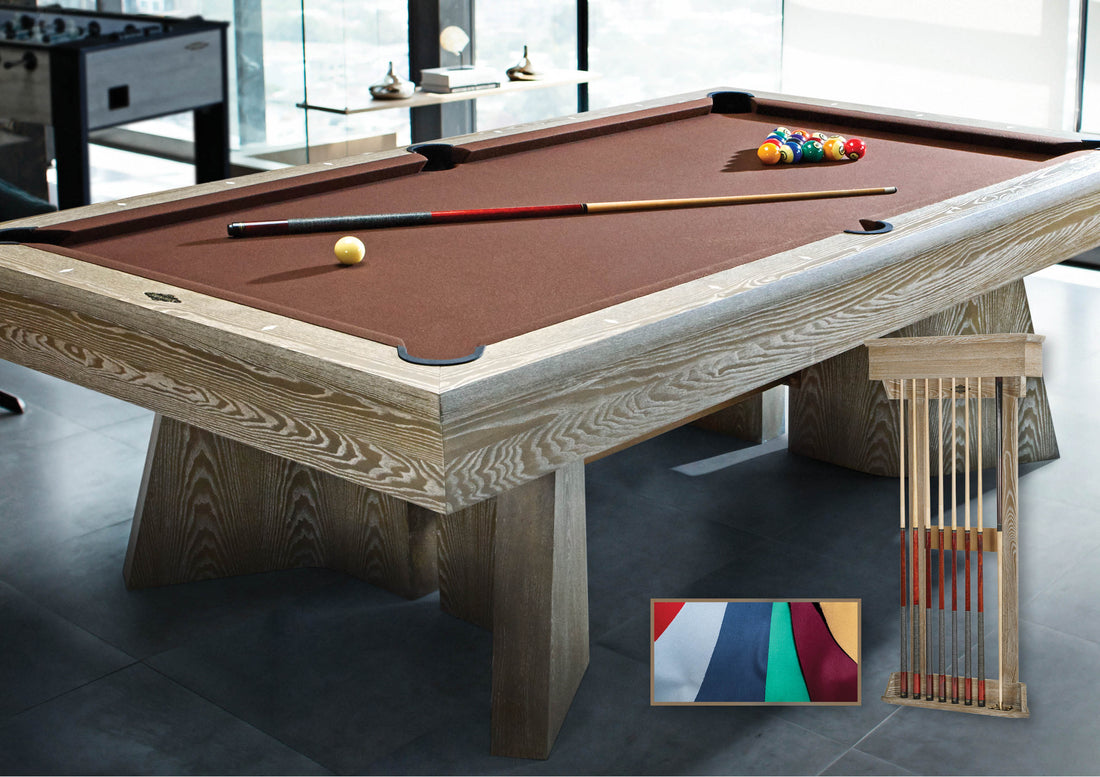What is the Difference between Billiards, Pool, and Snooker?
페이지 정보

본문
In Wolecki’s 2019 article, he strengthened this result by proving that there are only finitely many pairs of unilluminable points. As you might remember from high school geometry, there are several kinds of triangles: acute triangles, where all three internal angles are less than 90 degrees; right triangles, which have a 90-degree angle; and obtuse triangles, which have one angle that is more than 90 degrees. Join the points where the right angles occur to form a triangle, as seen on the right. To find a periodic trajectory in an acute triangle, draw a perpendicular line from each vertex to the opposite side, as seen to the left, below. The key idea that Tokarsky used when building his special table was that if a laser beam starts at one of the acute angles in a 45°-45°-90° triangle, what is billiards it can never return to that corner. We ask if, given two points on a particular table, you can always shine a laser (idealized as an infinitely thin ray of light) from one point to the other. This is called the illumination problem because we can think about it by imagining a laser beam reflecting off mirrored walls enclosing the billiard table. That is, a laser beam shot from one point, regardless of its direction, cannot hit the other point.
Snooker is played using twenty-two balls, one of which is the striker ball, which is white. Pool involves 15 coloured balls, a cue ball, and a pocketed table. In 1958, Roger Penrose, a mathematician who went on to win the 2020 Nobel Prize in Physics, found a curved table in which any point in one region couldn’t illuminate any point in another region. In 2014, Maryam Mirzakhani, a mathematician at Stanford University, became the first woman to win the Fields medal, math’s most prestigious award, for her work on the moduli spaces of Riemann surfaces - a sort of generalization of the doughnuts that Masur used to show that all polygonal tables with rational angles have periodic orbits. Another approach has been used to show that if all the angles are rational - that is, they can be expressed as fractions - obtuse triangles with even bigger angles must have periodic trajectories.
Instead of just copying a polygon on a flat plane, this approach maps copies of polygons onto topological surfaces, doughnuts with one or more holes in them. Somewhat remarkably, the existence of one periodic orbit in a polygon implies the existence of infinitely many; shifting the trajectory by just a little bit will yield a family of related periodic trajectories. And yet analyzing billiard trajectories shows how even the most abstract mathematics can connect to the world we live in. Bréton was selected as official supplier of the 3 Cushions World Championships in Germany in 2006 and 2008 and official supplier of the French Billiards Federation for National finals since 2010. Our tables are currently set up in many clubs and pool halls where we insure the maintenance all year round. The following are the current requirements for World Championship and World Tour events. In addition, the level of competition may be considered since players at the top levels can be expected to be fully familiar with the rules and regulations, while relative beginners may be unfamiliar with how the rules are normally applied.
But you’d be surprised how many different games you can play on your billiard table. After a break, the 2nd player will choose 3 pockets along either long rail of the table (he’ll select his "side"). The hypotenuse and its second reflection are parallel, so a perpendicular line segment joining them corresponds to a trajectory that will bounce back and forth forever: The ball departs the hypotenuse at a right angle, bounces off both legs, returns to the hypotenuse at a right angle, and then retraces its route. He made a ball jump 34 centimetres high! The player who (legally) sinks 7th ball wins. If a stalemate occurs (see 1.12 Stalemate), the players will lag again to determine who will shoot an opening break. The exception to this is if a player scratches on the break. Only one ball may be called on each shot, except on the break shot where no ball may be called. The referee shall answer players’ inquiries regarding objective data, such as whether a ball will be in the rack, whether a ball is behind the head string, what the count is, how many points are needed for a victory, if a player or his opponent is on a foul, what rule would apply if a certain shot is made, etc. When asked for a clarification of a rule, the referee will explain the applicable rule to the best of his ability, but any misstatement by the referee will not protect a player from enforcement of the actual rules.

- 이전글You'll Never Guess This Integrated Frost Free Fridge Freezer 50 50's Tricks 24.09.19
- 다음글Togel Resmi Indonesia Tools To Improve Your Everyday Lifethe Only Togel Resmi Indonesia Trick That Should Be Used By Everyone Know 24.09.19
댓글목록
등록된 댓글이 없습니다.